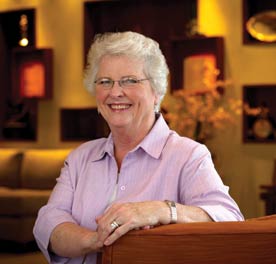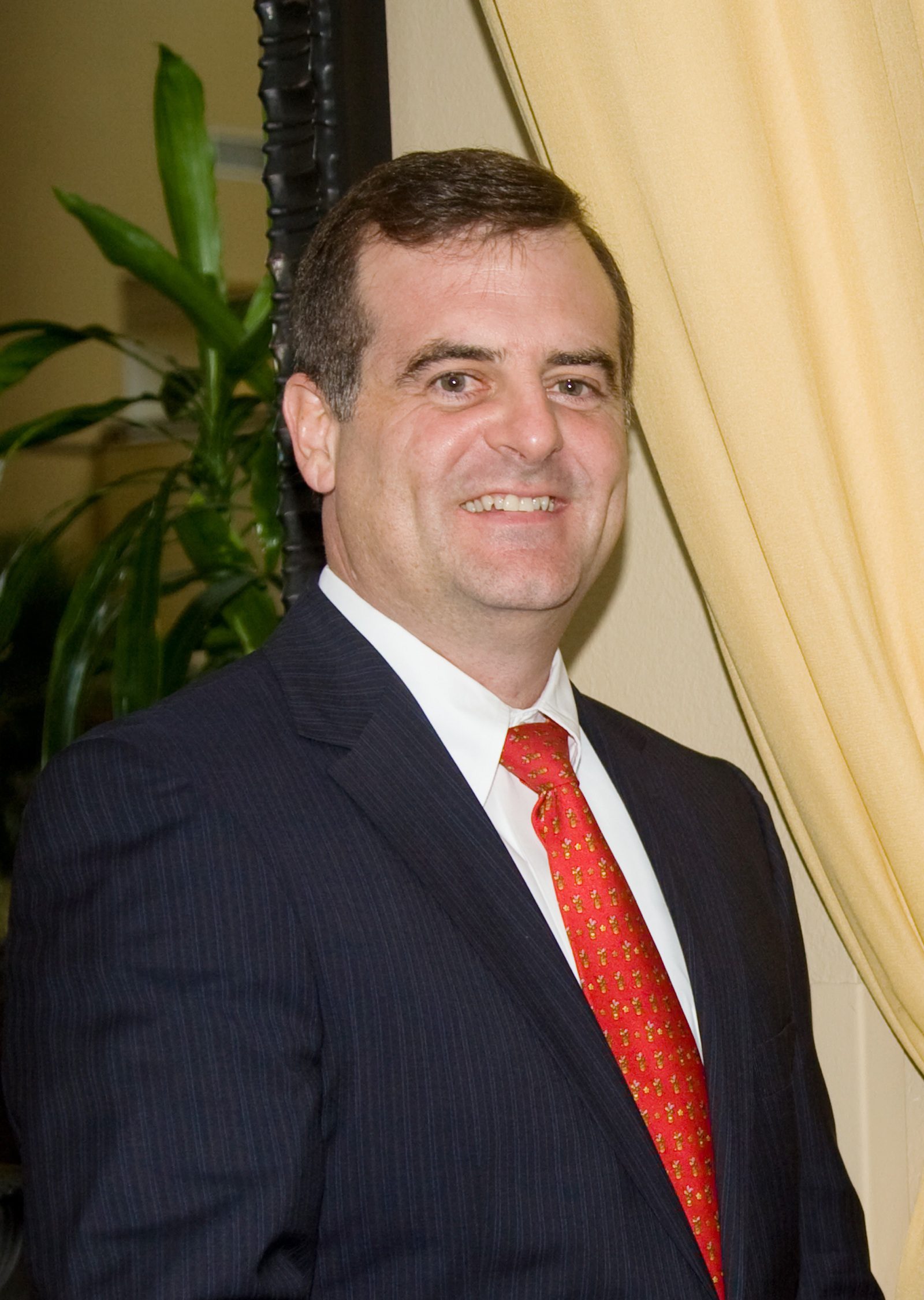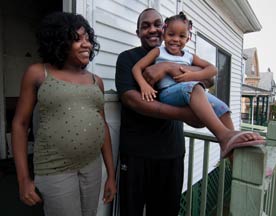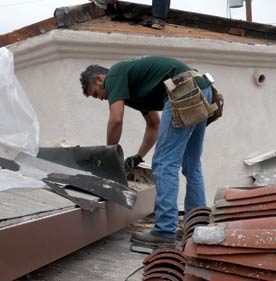Sister Lillian Murphy’s 25-year tenure as CEO of Mercy Housing has successfully fused a commitment to mission—building healthy, vibrant communities through core organizational values of respect, justice, and mercy—with a business savvy that has seen Mercy expand to 41 states and provide housing to more than 135,000 residents.
Once a hospital administrator in California with little knowledge of affordable housing, Sister Lillian emerged as a leader in affordable housing finance, as well as an innovator who readily admits there is still more to learn when it comes to finding the nexus between housing and healthy living.
Sister Lillian spoke with Shelterforce about the importance of mission, how Mercy plans to close the gap between supply and demand in affordable housing for low-income communities, and educating the next generation of community development professionals.
Shelterforce: Please tell us about yourself and how you came to be with Mercy Housing?
Sister Lillian Murphy: I was a hospital administrator before I came to Mercy. I had worked various positions in healthcare for about 15 years. I was on the board of a major healthcare system in California, and Sister Mary Therese Tracey was also on the board.
Sister Therese was the first CEO of Mercy Housing, so when she would come out for meetings, we’d get together and I’d hear about what she was doing. It fascinated me. When she was leaving Mercy Housing, she called and said, “I think you should apply,” and I knew next to nothing about affordable housing at that point. But I eventually decided I’d do this, and I thought, “Well, maybe I’ll do it for three to five years, and then I’ll go back into healthcare.”
Well, I immediately saw the connections between healthcare and housing, or lack of it, and really felt like we needed to bring a broader vision to this, and also a broader vision to what we were calling healthcare but was really acute care in the hospital setting. I loved it. When I first came, I can remember the first day, walking into the office and thinking, “This just feels so right.” And I haven’t regretted it ever since.
You have done a remarkable job at Mercy.
We have an enormously talented staff who are incredibly dedicated. Makes it all work.
Let’s talk about the challenges of navigating between the imperatives of running an efficient business and the moral need to stay true to mission. In your core values, you talk about respect, justice, and mercy. Nowhere do you talk about the bottom line and efficiencies of scale.
Yes. Well, we have three or four distinct statements that we use. The first is the vision statement, which for us is where do we want to be, what’s the end result of the work that we do. And it’s broad. It’s to create a more humane world where poverty is alleviated, communities are healthy, and everyone has the opportunity to develop their full potential. So that’s the big, broad vision of what we’re doing.
Next is the mission statement, which for us really describes what we do. And our mission statement starts out, “We create stable, vibrant, healthy communities.” It’s broader than just housing or housing development. It’s much broader than that. So we’ve always had a community-based approach to the housing development that we do.
Now, we fulfill that mission of creating stable, vibrant, healthy communities through developing, financing, and operating quality, affordable, program-enriched housing for people who can’t afford market-rate rentals. So “why we do what we do,” is the vision, “what we do,” is the mission, and “how we do it” is the core values: respect, justice, and mercy. And the last is our operating commitments—how are we going to operate within those three core values.
And so I think, for me, the business and mission are not separate. The mission is everything that we do, and it includes the business. It includes the resident services. It includes the less quantifiable activities that are part of the organization.
So in my mind, our mission is to create stable, vibrant, healthy communities. We can’t continue to do that if we don’t have a stable, vibrant, healthy Mercy Housing. So we really have a dual mission here, and there are measures for both creating communities and for keeping Mercy Housing healthy, and we’re responsible for both.
Are they ever in conflict?
I really don’t think so. In the past, in some nonprofit organizations, there is a tendency to use mission as an excuse for not making good business decisions. And I don’t think we can do that. The business we’re in in Mercy Housing is very complex real estate development that we have to be really good at because there’s a lot of risk there. And we’re making promises to people who support what we’re doing, in terms of financing or equity or contributions, that we’re going to be around to keep those promises 30 and 50 years from now. And so we have to be really good business people, or we’re not going to be able to continue to provide the high quality housing and programs that are so integral to success for our residents.
Some nonprofits develop for higher-income households, some even do market-rate housing to cross-subsidize their other developments. But there is concern that as they do this, there will be mission creep and it will become more and more difficult to reach the low-income population they started with. With about 1300 people working for Mercy, how do you assure that the mission does drive everything?
1,400 I think now.
That’s a lot of folks, and every day decisions have to be made. Is there some specific guidance like “We won’t cross this line,” or “This goes beyond our mission in a very clear way?”
Well, our mission is to low- and moderate-income people, so that’s a pretty broad spectrum, zero to 120 percent of AMI. In reality, we have focused on 50, 60 percent and below, and that is what our current inventory is.
The reason that nonprofits are involved in 60 percent or 50 percent or below is because of their mission, because they believe that it’s the right thing to do. You don’t make a lot of money doing it, so that’s the challenge. Particularly on supportive housing for formerly homeless, of which we have 2,000 or 3,000 units, the margins are razor thin. So you have to say to yourself that we are in this to be long-term owners, to keep this asset affordable. If we can’t produce revenue that allows us to continue to do that, then we’re not going to be able to maintain the long-term ownership or maintain the property the way we want it.
So you’ve got to make those decisions about what’s possible and what’s not possible to meet your long-term responsibilities, both to the residents, which is the most important, but also to the lenders and the investors who’ve made it possible for us to build and operate this stuff. I think you just have to constantly look at what you’re doing, why you’re doing it, and use that as a screen for decisions that you make.
Let me give you an example. We just sold a property in Omaha, Nebraska. We actually acquired it from a for-profit probably 15 years ago. It was a rehab of an old historic school building into housing. We’re to the point now where we need to put some additional money into it in rehab, and at this point we don’t have the cash to do that. We received an unsolicited offer from a purchaser who wanted to buy it from us because he’s bought other historic school buildings, and it’s just kind of a thing he wants to own long-term.
In our conversation with that individual we said that we wanted him to maintain this as affordable as long as possible. And he said, “Yes, that would be my intention. I’d just take over the Section 8 contract.” That’s all project-based Section 8.
And we said, “Well, tell us your plans in terms of what kind of rehab are you considering and at what level.” We were satisfied, after having that conversation, that he was committed to improving the property and to the affordability requirements and to the current residents. And he had the cash to do it and we didn’t. So we sold it to him, because it resulted in cash for us that we needed to do other things.
I don’t believe that making good business decisions that take into account the future of those residents is against our mission. I think it fully supports our mission, which is creating these stable, vibrant, healthy communities. One of the things you have to do is to maintain the building properly, to be sure that it’s not an eyesore in the community, which is part of our outreach. And if we can’t do that, I think we have an obligation to find an owner who can.
What if, after your conversation, it became clear that he wasn’t as committed as you had hoped that he was?
Then we probably wouldn’t have sold it.
And tried to figure out other financing sources?
Right. Try to figure out where other sources could be that we could get the cash we needed to do the improvements.






After reading the entire interveiw of Sister Lillian Murphy; words seem inadequate to express my admiration for her.
Knowing her leadership ability and her geniune caring for those that lack the economic resources to access quality, safe housing opportunties and the ability to assess health care makes me proud to be staff at Mercy Housing.